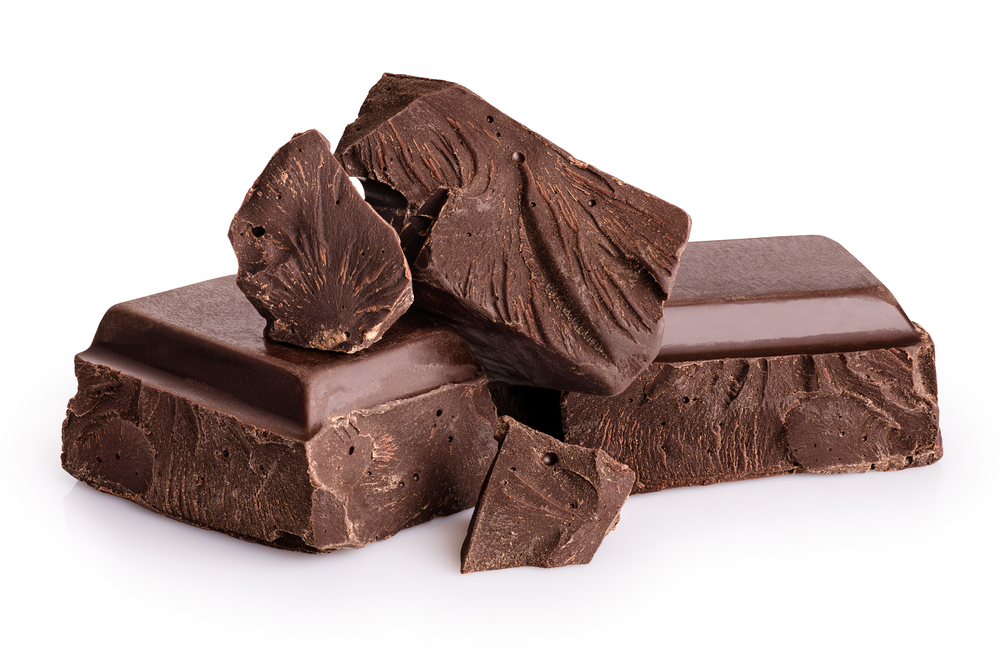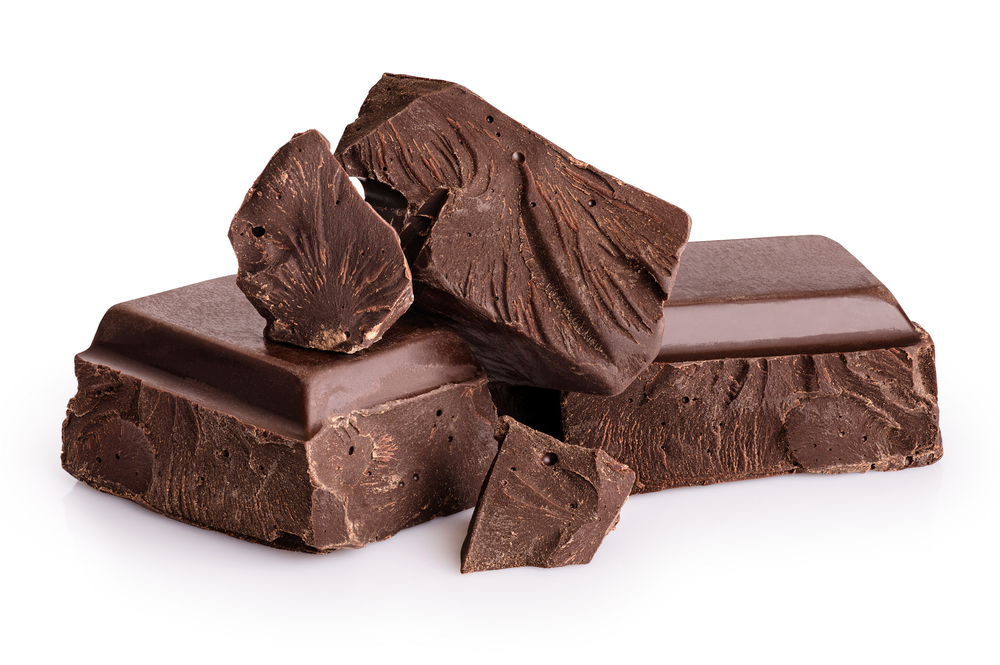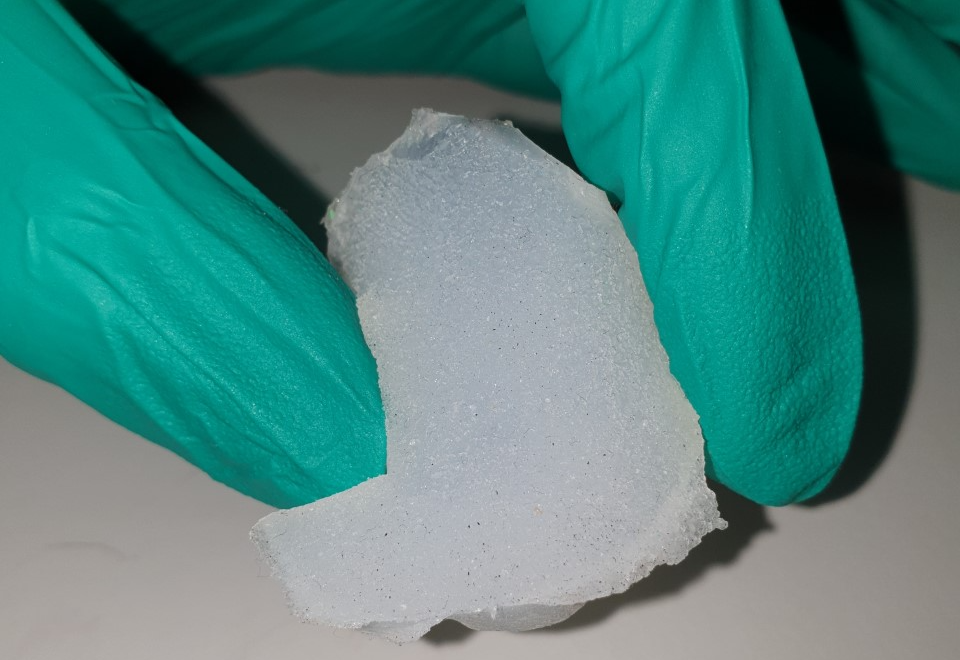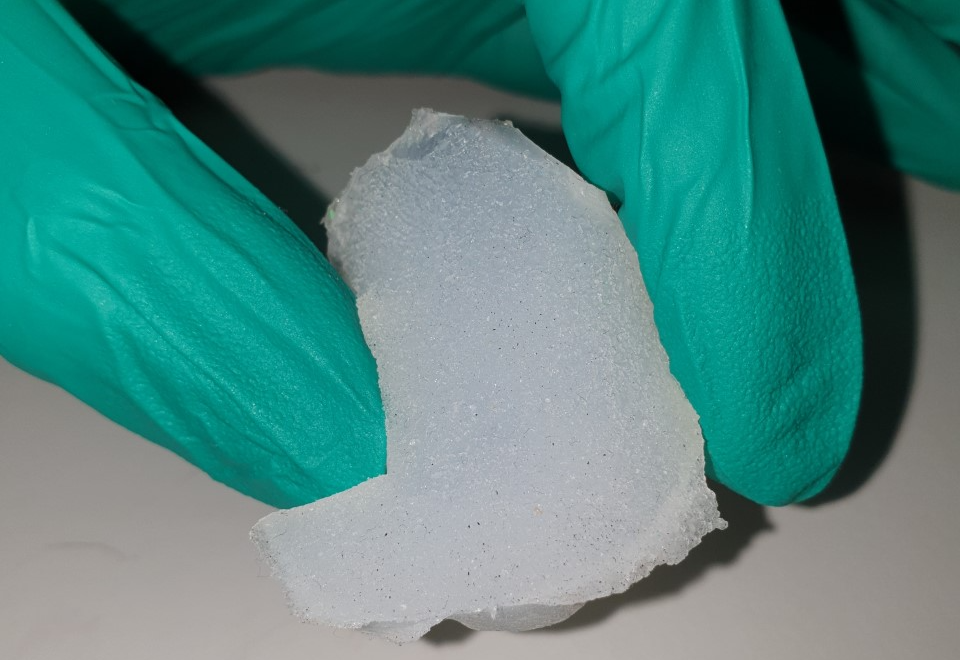The Fattier the Surface, the Silkier the Chocolate
Chocolate is a $127 billion-a-year industry, with the average American eating three bars of this candy a week. Despite its ubiquity, many questions remain about why this indulgent treat tastes so good. Now Anwesha Sarkar of the University of Leeds, UK, and her team have used a newly developed mouth simulator to bite into one outstanding question—what gives chocolate its silky texture [1]. Sarkar says that the results could inform the design of next-generation foods, such as those made with healthy, sustainable ingredients.
Understanding the touch-related sensations, or “mouthfeel,” of a food has historically been difficult because of a lack of tools to imitate the processes going on in the mouth. These processes—which include licking, chewing, and swallowing—produce a wide range of interactions between food and the mouth’s main touch sensor, the tongue. “This complexity has made the mouth very difficult to replicate,” Sarkar says.
Previous experiments simulated tongue–food interactions by rubbing liquid or semiliquid food between two smooth, hard surfaces. Those surfaces often lacked the microstructures of the tongue’s protuberances—papillae—which give the tongue its texture. Some researchers have tried to replicate the papillae with simple micrometer-scale pillars in a grid format. Sarkar and her team developed a new tongue simulator that includes 3D-printed papillae with the same shape, size, and random surface distribution as real ones. “We printed papillae that are identical to those of a human being,” Sarkar says. “That is unique for tongue replicas.”
The papillae pattern was molded onto the surface of a silicone elastomer, creating a replica tongue with the same softness, wettability, and roughness as those of a human tongue. The team attached the replica to the upper plate of a triborheometer—a device used to measure the coefficient of friction between two surfaces—and then performed various rubbing experiments by moving the tongue over a piece of chocolate.
In their experiments, Sarkar and her colleagues simulated three steps of the eating process. For licking, they rubbed the tongue over a square of solid chocolate; for eating, they rubbed it over molten chocolate; and for swallowing, they used molten chocolate mixed with a liquid meant to act like saliva. They repeated these experiments for four different kinds of dark chocolate, each of which had a different fat content. Dark chocolate was chosen because—unlike other chocolates—it doesn’t contain milk, which would add an extra level of complexity. “Chocolate is a very complex system, so we used the simplest version that we could,” Sarkar says.
Considering first the licking stage, the team found an inverse correlation between the friction coefficient of the chocolate and its fat content, with the chocolate becoming more slippery with increasing fat. The same result was found for the eating stage. Other measurements indicated that for both licking and eating there existed a lubricating, fat-dominated layer of chocolate directly between the tongue and the sample.
The results for the swallowing step were more complex. During measurements of these chocolate-saliva samples, the mixtures underwent significant structural changes, with the molten fat coalescing into droplets of around 200 µm in diameter. The friction measurements meanwhile indicated that fattier chocolate was less slippery—opposite to the licking and eating stages. Another difference was that the lubricating layer was dominated by saliva rather than fat.
These results suggest that an eater will experience a silkier feel on their tongue when they bite into a fattier piece of chocolate. The fat content continues to dominate this tongue–food interaction during initial chewing but then rapidly becomes irrelevant. “Our experiments show that fat content dramatically influences the initial textural sensation and mouthfeel of the chocolate and that it’s the fat content of the surface layer that matters most,” Sarkar says.
For Sarkar this finding suggests that food manufacturers could devise neat tricks to make chocolate healthier while keeping its lip-smacking good taste. For example, they could produce chocolate bars that are coated with a high-fat layer but that contain minimal fat on the inside. She also thinks that their tongue simulator could be used to inform the design of healthier, more sustainable foods, such as meat-like products made from plant-based proteins. “Taste is of course important,” she says. But if the texture is wrong no one will want to eat the food. “If you are designing a food, how it interacts with oral surfaces is key.”
Wilson Poon, a soft matter physicist at the University of Edinburgh, UK, can also see Sarkar’s approach being used to study the “skinfeel” of cosmetic creams or topical medications, a problem highlighted by the COVID-19 pandemic. Like the tongue, the skin has a complex microstructure that can influence a person’s experience of a skin–liquid interaction. For example, Poon says that people have been found to underapply hand gels that don’t “feel right,” and the lubrication of mask straps for those who have to wear them for hours on end “is a problem that still awaits a good solution.” For both the skin and the mouth, touch-related problems are “intrinsically multiscaled, and so a multiscale experimental approach is just about the only way to make serious progress,” he says.
–Katherine Wright
Katherine Wright is the Deputy Editor of Physics Magazine.
References
- S. Soltanahmadi et al., “Insights into the multiscale lubrication mechanism of edible phase change materials,” ACS Appl. Mater. Interfaces 15, 3699 (2023).







